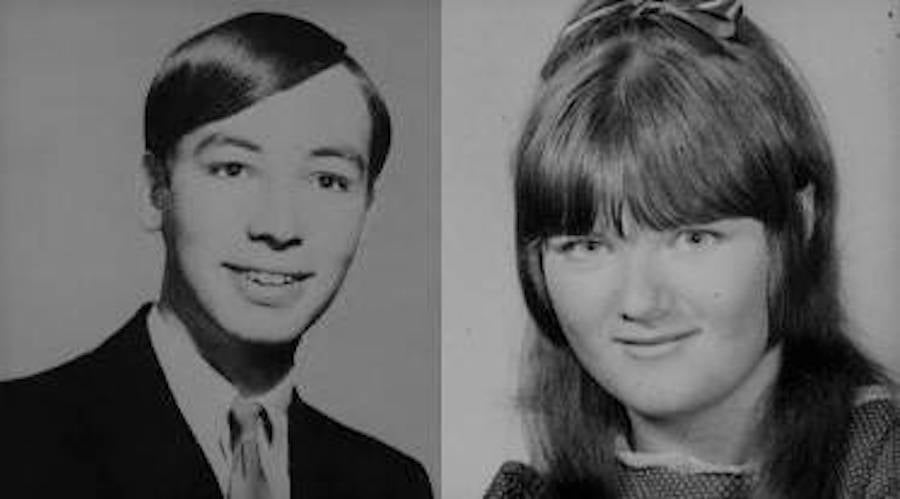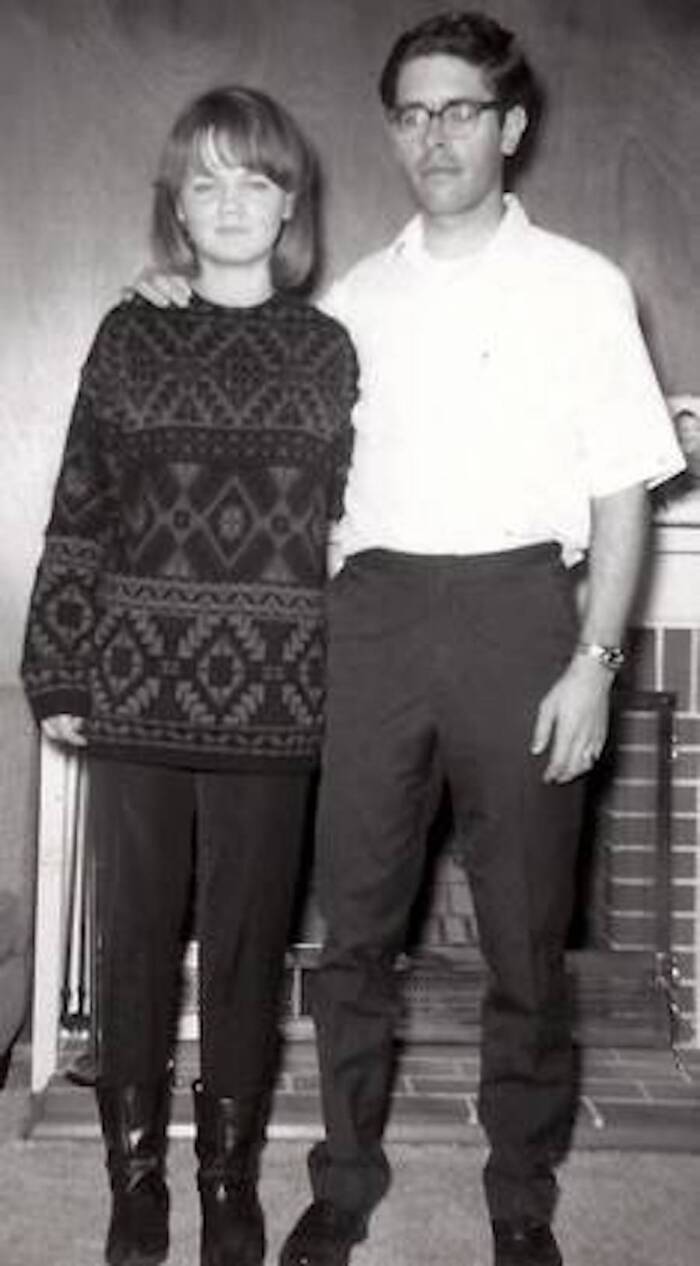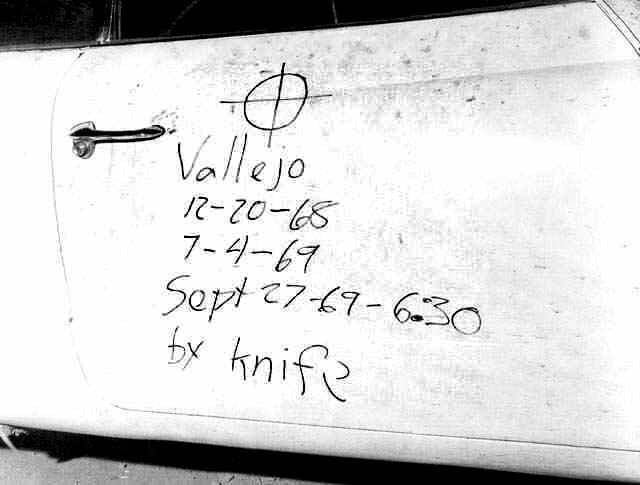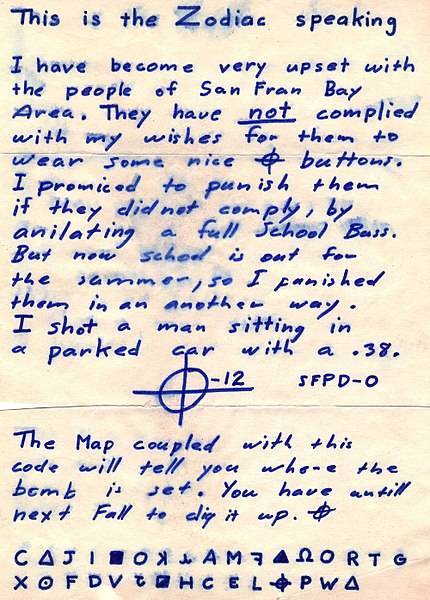The Zodiac Killer murdered at least five victims in Northern California between 1968 and 1969 — and we still don't know who he is.

Public DomainA wanted poster featuring sketches of the Zodiac Killer, whose identity remains unknown.
The case of the Zodiac Killer remains one of the most infamous unsolved serial murder cases in American history. The mysterious killer’s reign of terror in Northern California during the late 1960s left a trail of victims, puzzling messages, and unanswered questions that continue to haunt investigators and the general public to this very day.
Although many potential suspects have been named in the case, none have ever been officially identified as the Zodiac Killer. The brutal nature of his crimes makes this mystery even more chilling. The Zodiac Killer is believed to have murdered at least five people — and injured two others, who managed to survive — between 1968 and 1969. But that wasn’t the end of it.
From 1969 into the early 1970s, the notorious killer sent taunting letters to local newspapers and eerie messages to police. Some of his letters included ciphers that only further masked his identity. To date, no one has been able to identify the Zodiac Killer — and some worry that he may still be out there.
The Zodiac Killer’s Brutal Spree Begins: The Lake Herman Road Murders
The Zodiac Killer’s confirmed victims include seven individuals, five of whom were tragically murdered. The other two survived their encounters with the elusive assailant. Each attack was ruthlessly cold-blooded and sent shockwaves through the communities of Northern California.
The first attack occurred on December 20, 1968, when 16-year-old Betty Lou Jensen and 17-year-old David Arthur Faraday were shot to death in a secluded “lover’s lane” in Benicia, California. The young couple had been enjoying a quiet evening together when their lives were brutally cut short.

Public DomainDavid Arthur Faraday and Betty Lou Jensen, the Zodiac Killer’s first confirmed victims.
According to Michael D. Kelleher and David Van Nuys’ book This Is the Zodiac Speaking, the high school couple were attacked shortly after 11 p.m. Following an investigation by the police, authorities posited that a car had pulled up next to their vehicle, approximately 10 feet away.
The mysterious driver then purportedly exited his vehicle and approached the teens, firing gunshots at their car. These initial gunshots did not strike either of the victims, leading investigators to conclude that, perhaps, the shooter ordered the terrified couple to exit their vehicle.
Both teens attempted to flee the scene, but only Jensen was able to make it out of the car. Faraday was fatally shot in the head as Jensen took off, though she didn’t make it far. The shooter fired several shots, five of which struck Jensen in the back. Then, the killer got in his car and left.
The Zodiac Killer Strikes Again: The Blue Rock Springs Murder
The second attack took place on July 4, 1969, targeting Darlene Ferrin, 22, and Michael Renault Mageau, 19, at Blue Rock Springs Park in Vallejo, California. Ferrin was fatally shot, while Mageau survived his injuries.
Ferrin and Mageau had met at a local restaurant earlier, and despite the fact that Ferrin was married, the two had apparently spent much of July 4th together. Ferrin likely arrived at Mageau’s home around 11:45 p.m., after which the pair traveled to a parking lot at Blue Rock Springs.
Eerily, the parking lot was close to the “lover’s lane” where Faraday and Jensen had been shot, just about two miles away from the first crime scene.

Public DomainDarlene Ferrin, the popular restaurant employee killed by the Zodiac Killer.
Once again, another car arrived shortly after the pair entered the parking lot. This time, according to Mageau, the driver sat in their car with the lights off for some time before suddenly driving off. But they returned just five minutes later and parked closer to Ferrin’s car. Like before, the driver exited their vehicle and approached the pair, shining a flashlight inside. Believing the person was a police officer, Mageau began to search for his ID — and almost immediately, the stranger fired a gun, hitting both Mageau and Ferrin.
Panicked, Mageau leapt into the car’s backseat, while Ferrin slumped forward. At one point, Mageau said that he yelled, after which the shooter fired at both of them again before driving off and fleeing the area.
Shortly after midnight on July 5th, three youths entered the parking lot and discovered the horrific scene. They called the police, who arrived to find Ferrin unresponsive and Mageau in a state of shock. Mageau ultimately survived his wounds, but Ferrin was sadly pronounced dead at 12:38 a.m.
Then, chillingly, just two minutes later at 12:40 a.m., the Vallejo Police Department received another phone call, this time coming from a payphone close to the station. The person on the other end said this:
“I want to report a double murder. If you will go one mile east on Columbus Parkway to the public park, you will find the kids in a brown car. They were shot with a 9-millimeter Luger. I also killed those kids last year… Goodbye.”

Public DomainDarlene Ferrin and an unknown man who somewhat resembles the Zodiac Killer’s composite sketch. Circa 1966.
About a month later, during the first week of August, ominous letters written by the killer started arriving at the offices of the Vallejo Times-Herald, the San Francisco Chronicle, and the San Francisco Examiner. In one letter, the killer identified himself for the first time as the “Zodiac.”
In three of the letters, each sent to a different newspaper, there were clues to solve a 408-symbol cryptogram, which the Zodiac Killer said would lead to the codebreaker uncovering his identity. This was, of course, not true, though that initial cipher and its message were soon solved. It reads:
“I like killing people because it is so much fun it is more fun than killing wild game in the forrest because man is the most dangeroue anamal of all to kill something gives me the most thrilling experence it is even better than getting your rocks off with a girl the best part of it is thae when I die I will be reborn in paradice and all the I have killed will become my slaves I will not give you my name because you will try to sloi down or atop my collectiog of slaves for my afterlife ebeorietemethhpiti”
Notably, in the letters, the Zodiac Killer took responsibility for both the Blue Rock Springs attack and the Lake Herman Road murders.
The Third Attack: The Lake Berryessa Murder
On September 27, 1969, the Zodiac struck again at Lake Berryessa near Napa, California, stabbing 22-year-old Cecelia Shepard and 20-year-old Bryan Hartnell. Shepard succumbed to her injuries days later (but not before helping Hartnell give a description of their attacker), while Hartnell survived.
The two had been picnicking near the lake on a beautiful day. As they were enjoying their time together, they said that they were approached by a white male with brown hair who stood roughly five feet, 10 inches tall. The man wore a black hood with clip-on sunglasses over the eye holes, and a waistline bib. On the bib was a symbol resembling a crossed circle.
The man claimed to be an escaped convict and ordered Hartnell to give him money and his car keys, which Hartnell agreed to do. The man then handed Shepard some plastic clothesline and instructed her to tie up Hartnell. When she was done, he did the same to her. However, the Zodiac broke tradition here, stabbing the two of them with a knife rather than shooting them.
Hartnell was stabbed six times; Shepard was stabbed 10 times. Then, the attacker wrote the message “Vallejo/12-20-68/7-4-69/Sept 27–69–6:30/by knife” on Hartnell’s car, along with his now infamous cross-circle symbol.

Public DomainThe chilling message left on Bryan Hartnell’s car, with the dates of three confirmed Zodiac Killer attacks.
Once again, the killer called police to report “a murder, no, a double murder” and said that he was responsible. Soon afterward, radio reporter Pat Stanley found the payphone that the call was made from, with the phone receiver laying on the shelf. Eerily, this phone was close to the local’s sheriff’s office.
Meanwhile, a fisherman had heard Hartnell and Shepard’s screams and contacted park rangers. When rangers arrived, Shepard was still alive. She and Hartnell were taken to a hospital, and though Hartnell survived, Shepard slipped into a coma from which she would never wake up.
The Zodiac Killer’s Final Confirmed Murder In Presidio Heights
The final confirmed attack occurred on October 11, 1969, when the Zodiac Killer fatally shot San Francisco taxi driver Paul Stine. The killer entered the 29-year-old’s taxi and asked him for a ride to Presidio Heights.

Public DomainPaul Stine’s taxi after the Zodiac Killer murdered him.
Just before 10 p.m., the killer fatally shot Stine, pocketed the cab driver’s wallet and car keys, and then fled the scene.
Before he left, though, the killer also cut off a piece of Stine’s blood-stained shirt. He later mailed the piece to a local newspaper to prove his responsibility for yet another horrific murder.
Witnesses provided a description of the perpetrator, and a police sketch was widely circulated. They described the attacker as a “husky” man who was wearing a dark or black jacket. The witnesses also described watching the killer rifling through the victim’s clothing and cleaning up the cab.
Near the crime scene, around the Presidio Army Base, a man matching the description was seen, but because a dispatcher had inaccurately described the killer as a Black man — not a white man in a black jacket — officers saw no reason to take this man into custody and released him.
It was the last confirmed killing of the notorious Zodiac Killer, but it was hardly the last time that his name would be mentioned.
The Investigation Into The Zodiac Killer
The investigation into the Zodiac Killer’s crimes was often frustrating for authorities. The case spanned multiple jurisdictions and involved countless law enforcement personnel. Of course, this was only made worse by the macabre cat-and-mouse game the killer was playing with police.
The first major break in the Zodiac Killer investigation came with the identification of Arthur Leigh Allen as a potential suspect.
Allen was brought to the attention of authorities due to his previous run-ins with the law, how close he lived to the Zodiac crime scenes, the fact that he wore a watch with the Zodiac’s infamous symbol, and his alleged plans to create a “novel” about a serial killer who attacked couples and sent letters to the police. However, despite extensive scrutiny and investigations by the police, no conclusive evidence linking Allen to the crimes was ever found.
The lack of physical evidence and the killer’s meticulousness in avoiding leaving traces behind made the investigation even more challenging.
The Zodiac Killer’s ciphers, including the infamous Z340 cipher, also presented a significant challenge for codebreakers trying to uncover the serial killer’s messages — and, hopefully, his identity.
It was not until 2020, over 50 years after the Z340 cipher was sent, that the code was finally cracked by a team of cryptographers. Unfortunately, the message did not reveal the Zodiac Killer’s identity, but rather contained more of his taunting ramblings, including, “I HOPE YOU ARE HAVING LOTS OF FUN IN TRYING TO CATCH ME,” further frustrating investigators.

FBIThe Zodiac Killer’s Z340 cipher, which was recently solved — but didn’t reveal his identity.
Two Zodiac ciphers remain officially unsolved to this day (though one engineer claimed that he solved them), but many experts are doubtful that they will ever be definitively decoded because of how short they are, making the encryption key incredibly difficult to unravel and understand.
Over the years, numerous other Zodiac suspects have been investigated, including Gary Francis Poste (who was named by a group of former law enforcement investigators known as The Case Breakers), but none have been definitively linked to the crimes. The case remains unsolved, and some law enforcement agencies in Northern California continue to receive tips and leads, hoping that one day the Zodiac Killer’s identity will be revealed.
The Harassment Of Reporter Paul Avery
Throughout the ongoing investigation into the Zodiac Killer, one San Francisco reporter, Paul Avery, was covering the case extensively.
Avery’s connection to the Zodiac began soon after he started covering the murders. He quickly became a central figure in the media frenzy surrounding the case — and started receiving letters directly from the killer.
One of Avery’s most significant contributions was linking the Zodiac to the 1966 murder of Cheri Jo Bates in Riverside, California. He discovered similarities between the Bates case and the Zodiac’s confirmed crimes, including a cryptic letter sent to the police. Avery’s revelation expanded the scope of the investigation and fueled speculation about the Zodiac Killer’s true identity — and how he may have taken more victims than expected.

Wikimedia CommonsAn eerie Halloween card sent to Paul Avery by the Zodiac Killer.
The Zodiac Killer’s fixation on Paul Avery intensified after his reporting on the potential Bates connection, and in 1970, Avery received a chilling Halloween card from the Zodiac, apparently threatening him.
Avery’s involvement in the Zodiac case took a toll on his personal life and health. He struggled with excessive drinking and smoking and the psychological impact of being targeted by the killer. Despite these challenges, he remained committed to uncovering the truth and bringing the Zodiac to justice. He worked up until his death from emphysema at age 66.
While Avery never identified the Zodiac, he did publicize the possibility that the killer could’ve murdered more than five victims. Indeed, today, many investigators believe that the true number of victims could very well be much higher, but there is no way of knowing for sure.
Unanswered Questions About The Zodiac Killer
The Zodiac Killer case is shrouded in numerous mysteries that continue to perplex investigators and the public alike. One of the most enduring questions is the Zodiac Killer’s true identity. Despite decades of investigation and countless theories, the Zodiac’s name and face remain unknown. The lack of a definitive suspect has fueled speculation and given rise to numerous theories, ranging from the plausible to the outlandish.

Wikimedia CommonsA 1970 letter sent by the Zodiac Killer to the San Francisco Chronicle.
Another mystery revolves around the killer’s motives. While some believe the Zodiac sought notoriety and attention, reveling in the fear and panic he caused, others speculate that he may have been driven by deeper psychological issues or a desire to exert power and control. The killer himself claimed in letters to be collecting “slaves” for the afterlife.
The killer’s letters offer glimpses into his psyche, but they also raise more questions than they answer, leaving his true motives shrouded in darkness.
The full extent of the Zodiac’s crimes is also uncertain. While seven victims are officially attributed to him (five of whom were murdered), the killer claimed to have murdered as many as 37 people. Whether these claims are true or merely the boasts of a disturbed individual remains unknown, though the possibility that there may be other victims who have never been identified only makes the case all the more bone-chilling.

Wikimedia CommonsA letter and map from the Zodiac Killer, postmarked June 26, 1970.
There is a reason why the Zodiac Killer remains such an infamous figure. His case, perhaps more than any other serial killer in American history, is still shrouded in the unknown more than 50 years after his murder spree began. Although he received plenty of press coverage at the time of his crimes, and even more coverage in the decades since, there is an undeniable sense of mystery surrounding the Zodiac Killer that remains strong to this day.
After reading about the Zodiac Killer and his mysterious identity, learn about Richard Ramirez, the “Night Stalker” who terrorized 1980s California. Then, read about the Long Island Serial Killer who terrorized New York for 30 years.





